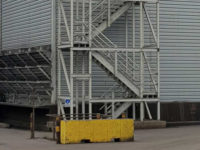For years, I worked for a mechanical contracting company that shifted its business plan from design-bid-build (DBB) project delivery to design-build (DB) project delivery. The move became very obvious as the optimum way to provide HVAC services. The company believed it could provide a better product, establish repeat business opportunities, achieve job satisfaction, and be more profitable than chasing the very competitive and not very rewarding plan and spec DBB arena. The same can be said for consulting HVAC engineers who receive their contracts via an architectural firm rather than be the lead on projects.
To just highlight why DBB is not rewarding to an HVAC contractor and HVAC engineering firm, one can list the following negative points:
-
The company is a subcontractor to a general contractor and is therefore not in charge of the project. The same can be said for the engineer-architect relationship;
-
As a subcontractor, the company is not the point-person interfacing with the building owner client. The same can be said for the engineer-architect relationship;
-
As a rule, the HVAC subcontractor is awarded a subcontract by submitting the lowest quote. The same can be said for the engineer’s bid although both the subcontractor and consultant may receive a contract based on “best value;” and
-
If the HVAC contractor does a great job, this firm will most likely not be awarded the next job unless its bid is the lowest. As a result, there is little incentive to exceed a general contractor or building owner’s expectations. It should be noted there are a lot of HVAC subcontractors who will still do their best to exceed expectations but only within the available fee. There is no “carrot at the end of a stick” to do differently. The same can be said for the consultant working with the architectural firm.
In DBB project delivery, HVAC subcontractors and HVAC consulting engineering firms are both “commodities.” So, why be a commodity?
Back when I worked for this DB HVAC contractor, its commitment to this project delivery method was very strong because the company invested in having an in-house engineering group to work in sync with its DB sales staff. In addition, and as an added benefit for the DB focus, this firm had a very large HVAC service department that was highly regarded by many building owners. This approach provided direct contact with the client, there was no general contractor or architect in between.
The DB HVAC firm developed a business plan that entailed six facets to the plan. First and foremost there had to be a plan/strategy to generate business costs effectively by targeting the project opportunities that included the following:
-
Focus on the core business, which was HVAC equipment and systems;
-
Targeting clients that were in need of a DB partner, including:
a. Equipment replacement as this equipment was reaching the end of its useful service life,
b. Unexpected equipment failure that would require equipment replacement,
c. Addition of equipment to provide redundancy or to accommodate a need for additional capacity,
d. Energy conservation utility rebates, and
e. Energy retrofits with agreed-upon returns on investment;
-
A cost-effective method to create an opportunity when a client doesn’t want to invest upfront in pre-engineering and estimating funds but will agree to proceed if scope, cost, and timeline meet his or her requirements;
-
Establish a quality control process to monitor, measure, and benchmark all aspects of the DB process from proposal to client acceptance of the project;
-
Include within each DB proposal a one- or two-year service contract on major equipment that would ordinarily not be covered in-house by the client; and
-
With quality control focus, there had to be a commitment to continuously improve the DB process to create more opportunities, make a profit, and exceed client satisfaction.
For me, professionally, this was probably the best time to be an engineer because you and the firm were in control of the process and interacting directly with the client. Based on proven experience, our company would routinely achieve repeat business with many of the clients as their needs would reoccur each year. In addition, the firm was able to offer clients support when creating next year’s capital budget for infrastructure projects. More on DB next month.





